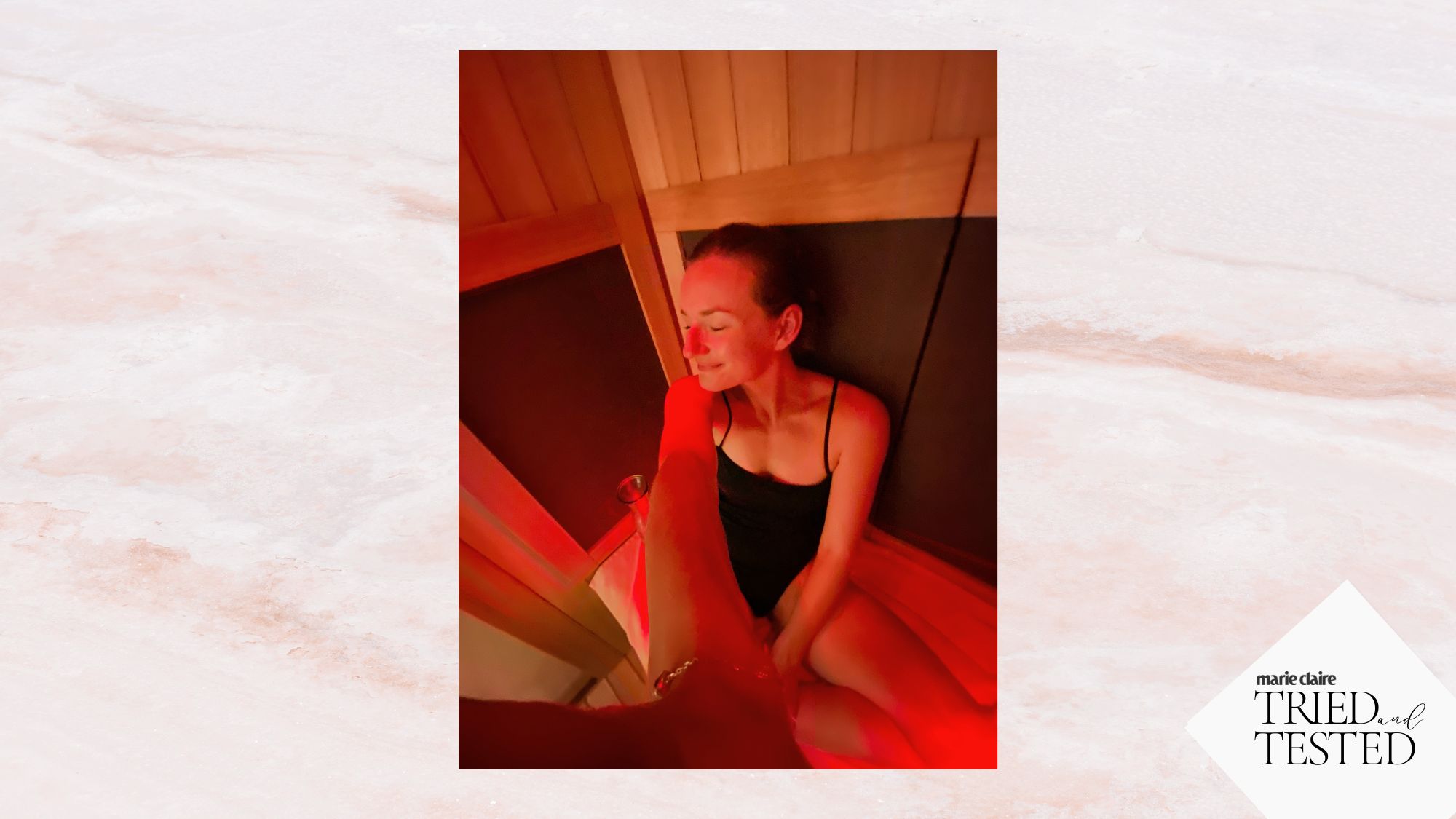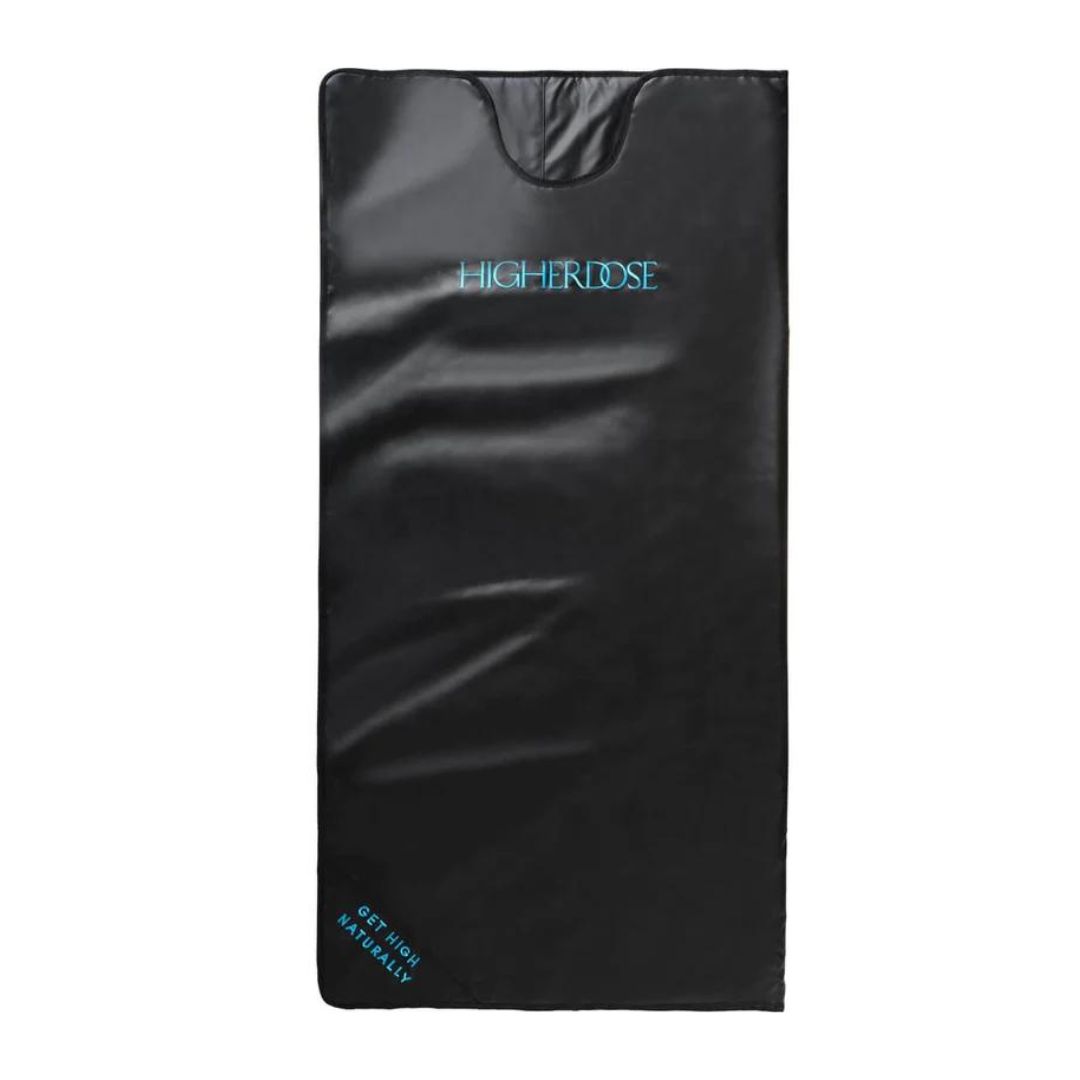
Seen infrared sauna benefits doing the rounds on your social media and wondering whether it's another expensive wellness fad or something that's worth a try?
As a Health Editor, so was I. Celebrities seem to swear by the alternative treatment, with Lady Gaga regularly using infrared to ease her fibromyalgia muscle spasms and pain and Gwyneth Paltrow carving out time to use hers for 20 minutes every day. “I walk out feeling so much more relaxed - and glowy, too," Goop founder Paltrow has shared previously.
Cindy Crawford, Kim Kardashian and Selena Gomez are also rumoured to be fans - but it's not just celebrities, with top athletes thought to use infrared saunas to boost both muscle and joint recovery. While I'm not a celebrity or athlete (far from it), I am currently training for my ninth marathon and attempting to up my recovery game to make sure I'm in the best shape come race day.
While that's largely looked like supplementing protein powder and electrolytes, taking adequate rest days and getting regular sports massages, when an invite landed in my inbox to try Remedi, a swanky new infrared sauna in South London, my interest was piqued.
Keen to see what I genuinely thought? Keep scrolling. Don't miss our guides to acupuncture benefits, reiki healing, and sound therapy, while you're here.
I've read loads about the infrared sauna benefits - so, are they fad or factual?
What is an infrared sauna?
First off - a bit of background for you. According to Dr Nima Mahmoodi, founder of Remedi London where I tried my first infrared sauna, it's a type of sauna that uses infrared heaters to emit infrared light. "This is experienced as radiant heat and then absorbed by the surface of your skin," he goes on.
When was it first invented? "Infrared light, also known as radiant energy, has existed as technology as far back as the 19th century," he shares. "The Japanese then integrated this technology into the sauna in the 1960s, after which units have only become smaller, better, and more convenient."
Celebrity news, beauty, fashion advice, and fascinating features, delivered straight to your inbox!
Now to the main pros and cons of using one. According to the expert, regular infrared sessions can boost your cardiovascular system, detoxify your cells and alleviate stress.
Not only that, but infrared saunas can improve your immunity and boost your metabolism. "The infrared sauna therapy acts like a passive cardio workout, improving circulation and helping reduce blood pressure," he shares. "On the metabolism front, infrared wavelengths create a passive workout, stimulating a sluggish metabolism and improving fat burn."
The main benefit I was interested in though, was its ability to speed up muscle recovery. According to the pro, "Infrared helps deliver oxygen to muscle cells for faster repair and pain relief."
A post shared by Clearlight Saunas Official (@clearlightsaunas)
A photo posted by on
Wondering whether this has all been scientifically proven? While more research certainly needs to be done on the matter, there is pretty extensive data dating as far back as the 1960s. "One 2015 study found that spending time in an infrared sauna after strength and endurance training helps with pain relief and reduces muscle soreness," he explains. "Similarly, people with rheumatoid arthritis were seen to experience short-term relief from pain, fatigue, and stiffness during four weeks of regular use."
There are mental health benefits, too, he goes on. "Taking 20 to 30 minutes in the sauna can alleviate stress and anxiety and improve focus and concentration," he explains. This is largely thanks to the release of feel-good endorphins, which have been scientifically proven to boost your mood.
If you've been struggling with your sleep, infrared saunas are also thought to help alleviate insomnia or sleep issues. "A study done at the Respiratory and Stress Care Center at the Kagoshima University Hospital in Japan found that far-infrared sauna treatment improved the patient's pain, fatigue, and sleep disturbance," shares Dr. Mahmoodi. "After sweating out bad toxins from your body and lowering your stress hormone inside a wooden infrared cabin, your body then enters a complete state of relaxation, ready to get its well-deserved quality sleep."
What I thought when trying an infrared sauna
Heading out of the tube at Nine Elms, I'm excited. While I've been a Health Editor for long enough to know that there's no such thing as quick fixes or overnight cure-alls, I was pretty impressed with the lineup of benefits infrared saunas supposedly offer.
I've been invited to try one at Remedi London, a dedicated wellness space promising to soothe your senses and leave you feeling your best. They've got a whole host of treatments on offer, from cryotherapy to acupuncture, but it's infrared that I'm most interested in.
I'm shown into a small room with space for the sauna, stool, and water dispenser. Fluffy white robes hang on the wall and the receptionist prompts me to get comfortable - you can head into the sauna in gym kit or swimwear, but he warns us that you'll spend your session sweating, so to wear whatever you'll feel most at ease getting sweaty in.
Then, the timer is set. While sessions can be anything from 20 minutes to an hour, they recommend 45 minutes, so 45 minutes it is. At Remedi, they have a TV screen in the sauna which you can watch shows on to pass the time, but instead, I opt to use the time for meditative self-reflection. It's rare that I ever get the chance to sit still for 45 minutes at a time, so I enjoy the heat and focus on my breathing.
The time flies by. While my partner finds the heat a lot and leaves after 30 minutes or so, I find it comforting and relaxing. I'm sweating, but not sweating so much that I find it uncomfortable.
Heading home, I feel like a floaty cloud. I'm super relaxed and my muscles feel the lightest they've felt in months.
That said, while I definitely enjoy the session, I'll be honest and say I don't notice many other benefits. I sleep well, but not significantly better, and I wouldn't know if my stress levels, immunity or metabolism run any differently than usual.
Dr. Mahmoodi and other experts in the field all confirm that you'd need to use an infrared sauna at least once a week to really feel a difference. While I enjoyed my session, my main takeaway is that it's probably not the most affordable or attainable recovery tool (I'd love to go more regularly, but fear weekly sessions will quickly add up - one infrared session at Remedi costs £50).
Of course, you could do a Gwyneth and get one installed at home.. probably not likely for my London flat, though. Will I try one again? If I could find a gym membership that had an infrared sauna on site, most definitely. But for now, I'll be sticking to my massage gun...
Shop sauna essentials now:
How often should you use an infrared sauna?
This one will obviously depend on your access to said sauna, but our experts advise using it regularly to see the most benefits. That's at least once a week for 20 minutes, but as much as every day, if you can.
The more you use it, the more benefits you'll enjoy - that said, don't use it for any longer than 45 minutes a day.

Ally is Marie Claire UK's Senior Health and Sustainability Editor, a well-regarded wellness expert, ten-time marathoner, and Boston Qualifying runner.
Utilising her impressive skillset and exceptional quality of writing, she pens investigative, review and first-person pieces that consistently demonstrate flair and originality.
As well as writing, Ally manages a team of freelancers, oversees all commissioning and strategy for her pillars, and spearheads the brand's annual Women in Sport covers, interviewing and shooting the likes of Mary Earps, Millie Bright, and Ilona Maher. Shortlisted for three BSMEs and winning one in 2022, Ally lives and breathes her verticals: her eye for a story and connections within the wellness sphere are unrivalled. Follow Ally on Instagram for more.



